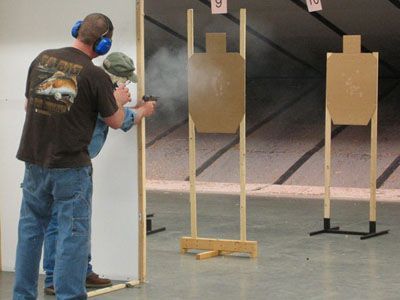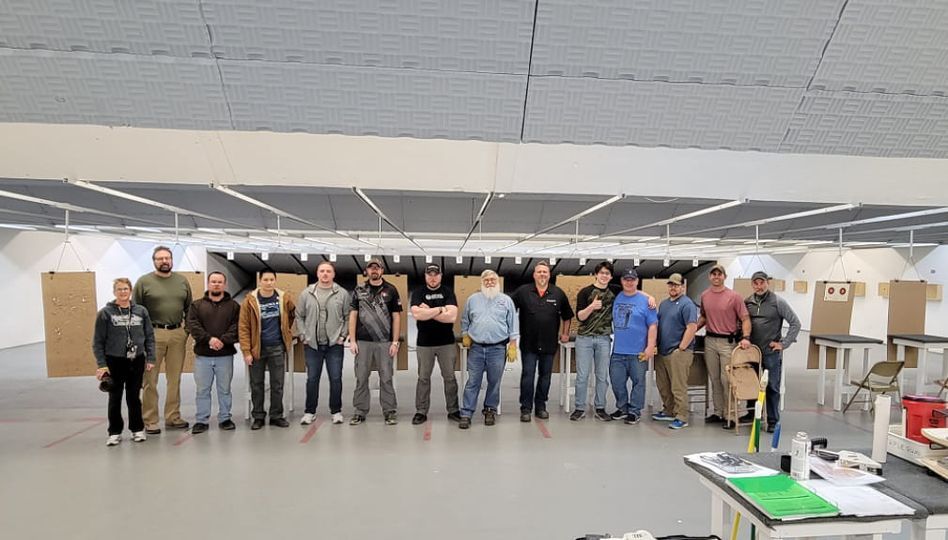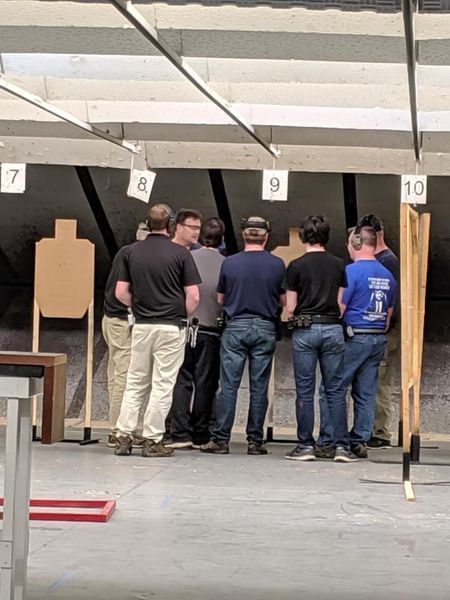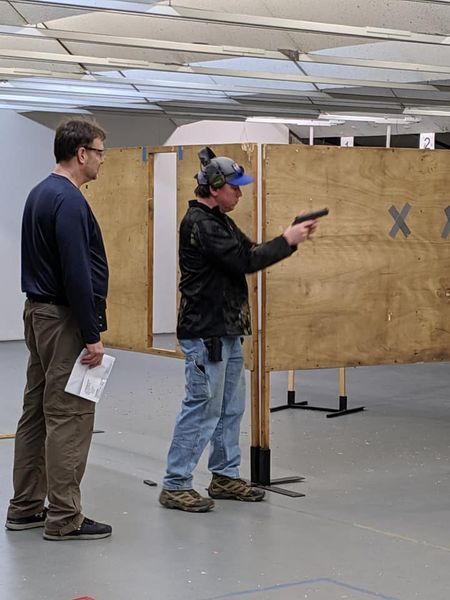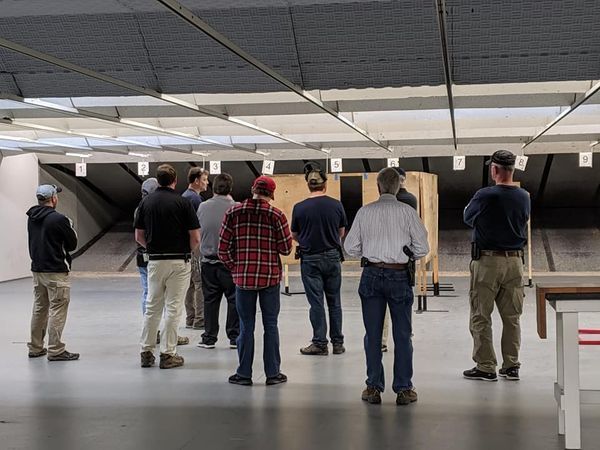USPSA- Action Pistol
Discipline Description
Many shooting sports require the shooter to take their time to carefully set up a small number of shots, with little to no time pressure, from a static position. That is not action shooting! Action Pistol Shooting, also known as Practical Shooting, involves the shooter engaging multiple cardboard and/or steel targets from various shooting locations and positions. Shooters must try to combine both speed and accuracy, as the score for a stage includes both the time to complete the stage and points for targets hit.
BMRPA’s Action Pistol has a meet about once per month. While it is scored as a competitive event, it is a friendly competition where your fellow shooters are quick to help you learn how an event is run, as well as to offer assistance and advice. The primary goal is to be safe and have fun shooting.
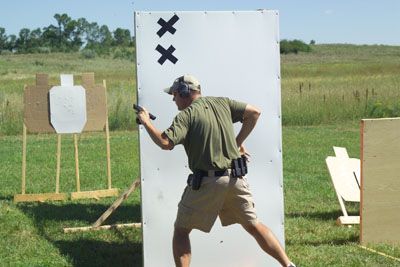
What gun(s) do I need to have to shoot an Action Pistol meet?
You can use any safely operating handgun. BMRPA is a member of the USPSA (United States Practical Shooting Association) which has specific rules pertaining to handgun divisions. The list of divisions, with a very abbreviated list of the rules, is as follows:
Production - Just about any production semi-auto handgun that hasn’t been modified with items such as optics (FO sights are accepted) or compensators. There is an approved gun list on the USPSA website. You’ll need to load only ten rounds for each magazine, this makes it a level playing field for everybody. Glocks and other polymer guns such as S&W M&Ps, Springfield XD/XDM, Sig’s, and CZ-75 are popular in this division. The most common rounds are 9 mm and 40 S&W.
Single Stack - This division might as well be called the 1911 division. Extras like optical sights, compensators, bull barrels, dust covers, and slide lightening are prohibited. This has been the most popular division. Maximum of eight rounds per magazine. .45 ACP is easily the most popular round, but smaller rounds can be used.
Revolver - No optical sights or compensators.
Limited - Generally, these are guns that are customized for speed shooting more than the Production guns. Larger magazines are allowed along with magwells, but scopes and compensators are not.
Limited 10 - Same as Limited, but magazines are limited to ten rounds.
Open - These are the race cars of Action Pistol Shooting. They include compensators, scopes, and high capacity magazines.
The smallest size round for any of the divisions is .38 cal/9 x 19 mm.
If you are new to Action Pistol Shooting, don’t sweat the USPSA rules governing divisions too much, we’ll get you shooting with whatever you bring. Generally, at a BMRPA match, all of the shooters, regardless of division, shoot together in one group.
What equipment do I need to bring?
Bring your handgun, ammunition, eye protection, ear protection, a holster, magazines, and magazine holders.
The holster doesn’t have to be fancy. It does need to cover the trigger though.
A typical stage requires 16 to 36 rounds. To be safe, you’ll need enough magazines to hold 40 rounds. If you have a 1911, three magazines will probably be enough for four of the five stages, and you will easily be able to borrow two magazines from another 1911 shooter.
The plastic magazine holders that may have come with your gun will be adequate to start. You may want to pick up an additional holder so that you can have three to four magazines on your belt, but especially for your first meet, you can get away with using pockets.
A typical BMRPA meet has five stages that will require a total of about 100 to 130 rounds. Bring 200 rounds, just to be safe.
For the first few meets, you should go slow and focus on your accuracy. Don’t worry about trying to keep up with the guys shooting in the Open division, they’ve been doing this for awhile. There are always plenty of shooters with limited experience that will be at your speed. You will find that the speed will come naturally with time.
Do I have to be a great shooter?
You absolutely have to be a safe shooter. You will be expected to know how to handle your weapon safely. The gun must be pointed downrange and your finger should be off the trigger when moving. The range officer will accompany you through your stage to help you shoot and move safely.
You do NOT have to be a bullseye or quickdraw champion. The cardboard targets that we use are approximately 18″ x 30″ and are usually located only 15 to 50 feet away from the shooter – and yes, most everyone still misses from time to time. If you are new to shooting, this is a great way to improve your competency with your handgun.
Want to learn more?
The BMRPA matches are about once per month. Be sure to check the calendar to get the latest information. Winter matches are held at the Johnson Family Marksmanship Center in South Bismarck. Summer matches are held at the Fried Family Marksmanship Complex located about 28 miles east. Feel free to come watch a match before you shoot one. After you see a stage or two, you will probably be itching to jump in to shoot with us, and chances are, we’ll get you to borrow a gun and shoot a stage that day. Matches start at 10:00 a.m. and generally have been lasting until about 2:00-3:00 p.m.
Much more information can be found online. The USPSA website includes some good information, but much more useful information can be found at the Brian Enos Forums (be sure to read the Tips for Newbies).
The Power Factor Show is an online video program that includes a lot of helpful information.
Look up “Action Pistol Shooting” on YouTube. I will caution you that the Action Pistol Shooting videos that you find on YouTube show shooters going much faster, and much more accurately than you’ll find at a typical BMRPA match.
To get a better idea of what a stage at a BMRPA match looks like, go to the BMRPA Action Pistol Shooting channel on YouTube.
Come Visit Us!
Contact us with questions!
We will get back to you as soon as possible
Please try again later
The best shooting club in the Bismarck/Mandan area!
QUICK LINKS
SHOOTING DISCIPLINES
SEO and Design services provided by Design Wizards. Privacy Policy.
The content of this website including but not limited to the images or any other marks are the property of their respective copyright owners and designers. All images and marks are used under license from their owners. Any copying or downloading without express written permission is a violation of copyright law and is prohibited.
